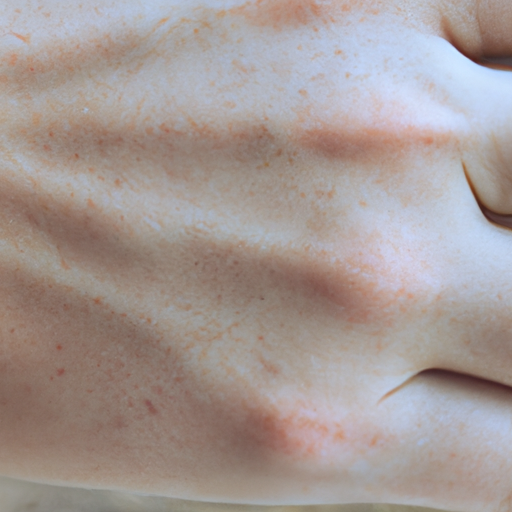Title: Unveiling the Secrets of Dry Skin: Diagnosis and Effective Treatment Strategies
As a dermatologist, I have encountered countless patients struggling with dry skin. This common condition, medically known as xerosis, can be a source of discomfort and frustration. It can range from mild, temporary dryness to severe, persistent skin conditions that significantly impact a person’s quality of life. Understanding the causes, diagnosis, and treatment strategies for dry skin can help manage this condition more effectively.
Dry skin is characterized by a lack of appropriate moisture in the epidermis, the outermost layer of the skin. It may present as rough, scaly, or flaky skin, often accompanied by itching. In more severe cases, cracks and fissures may develop, leading to potential infections. The causes of dry skin are multifaceted and can include environmental factors such as low humidity and cold weather, frequent bathing or hand washing, use of harsh soaps or detergents, certain medical conditions like hypothyroidism or diabetes, and aging.
Diagnosing dry skin involves a comprehensive examination of the patient’s skin and a thorough review of their medical history. As a dermatologist, I look for signs of inflammation, redness, scaling, and cracking. I also consider the patient’s lifestyle, including their bathing habits, skincare routine, diet, and any medications they may be taking. In some cases, I may perform a skin biopsy or other tests to rule out conditions that can cause dry skin, such as psoriasis or eczema.
Once a diagnosis of dry skin is confirmed, the next step is to devise an effective treatment strategy. The primary goal is to rehydrate the skin and restore its natural protective barrier. This typically involves a combination of lifestyle modifications and topical treatments.
One of the first recommendations I make is for patients to limit their exposure to water and harsh soaps. Frequent washing can strip the skin of its natural oils, leading to dryness. When bathing, it’s best to use lukewarm water and a gentle, fragrance-free cleanser. Immediately after bathing, apply a moisturizer to lock in moisture. Look for products containing ingredients like hyaluronic acid, ceramides, or glycerin, which are effective at hydrating the skin.
In terms of lifestyle modifications, maintaining a healthy diet rich in essential fatty acids can help improve skin health. Foods like avocados, nuts, and fish can contribute to maintaining a healthy skin barrier. Additionally, using a humidifier in dry climates or during winter months can help maintain skin hydration.
For patients with severe dry skin or those who don’t respond to over-the-counter treatments, I may prescribe topical corticosteroids or other medications to reduce inflammation and itching. In some cases, phototherapy (treatment with light) may be beneficial.
It’s important to remember that everyone’s skin is unique, and what works for one person may not work for another. Therefore, it’s crucial to work closely with a dermatologist to develop a personalized treatment plan.
In conclusion, while dry skin can be a challenging condition to manage, understanding its causes and implementing effective treatment strategies can significantly improve skin health and comfort. As dermatologists, our goal is to help patients achieve healthy, hydrated skin through personalized care and education.



